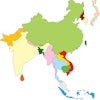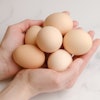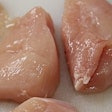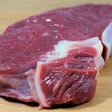The most recent statistics released by the Argentine Ministry of Agriculture unveils the beef intake per capita has plummeted to its lowest in 50 years - 53.3 Kg - from the peak 73.1 Kg, the highest in the world, ever, in 2009. Times seem harder now to the beef industry than in 2001, during the peak of the economic crisis. Then, even experiencing an unemployment rate around 17% and a poverty wave affecting a large proportion of its population, the beef consumption per capita was as high as 64 kg.
The local passion for beef remains high, but pockets, shallower now than ever before, just cannot cope with the rise of beef prices. The escalating prices for beef started to be felt more strongly in 2009, in the stream of the governmental interference in the beef industry, which commenced in 2006. There, a populist decision of the Argentine government restricted beef exports to force domestic prices down as to making beef more affordable for its domestic market, aiming especially at the lowest-income segment of the population, a votes reservoir for the government.
However, the government didn't realize the way beef exports actually worked. Beef producers often sold fancy cuts abroad at high margins, while selling gristly but tasty cuts locally. Therefore, when the government restricted exports, it cut ranchers' profits without changing domestic prices appreciably. Besides, the country was hit by the worst draught in the latest decades in 2008 and 2009. Altogether, they made the Argentine cattle herd shrink from 58 million heads in 2007 to about 48 million now.
The most recent statistics released by the Argentine Ministry of Agriculture unveils the beef intake per capita has plummeted to its lowest in 50 years - 53.3 Kg - from the peak 73.1 Kg, the highest in the world, ever, in 2009. Times seem harder now to the beef industry than in 2001, during the peak of the economic crisis. Then, even experiencing an unemployment rate around 17% and a poverty wave affecting a large proportion of its population, the beef consumption per capita was as high as 64 kg.
The local passion for beef remains high, but pockets, shallower now than ever before, just cannot cope with the rise of beef prices. The escalating prices for beef started to be felt more strongly in 2009, in the stream of the governmental interference in the beef industry, which commenced in 2006. There, a populist decision of the Argentine government restricted beef exports to force domestic prices down as to making beef more affordable for its domestic market, aiming especially at the lowest-income segment of the population, a votes reservoir for the government.
However, the government didn't realize the way beef exports actually worked. Beef producers often sold fancy cuts abroad at high margins, while selling gristly but tasty cuts locally. Therefore, when the government restricted exports, it cut ranchers' profits without changing domestic prices appreciably. Besides, the country was hit by the worst draught in the latest decades in 2008 and 2009. Altogether, they made the Argentine cattle herd shrink from 58 million heads in 2007 to about 48 million now.


















